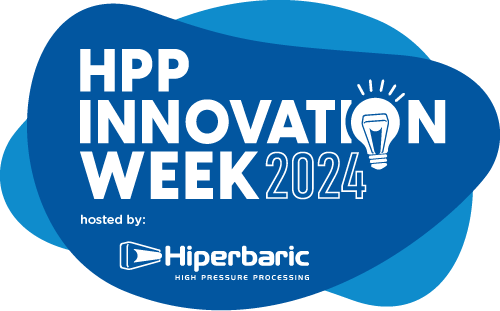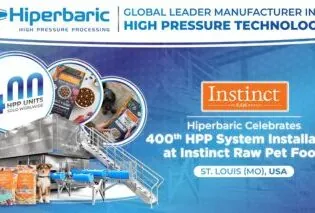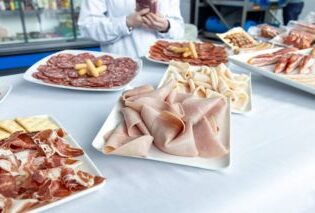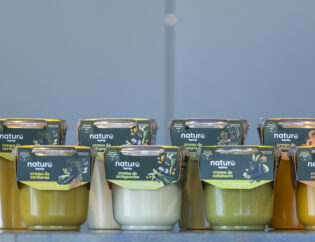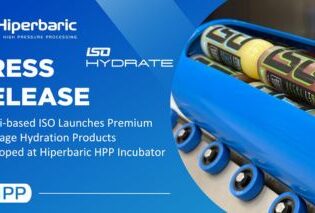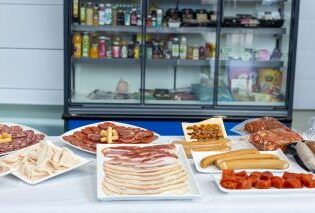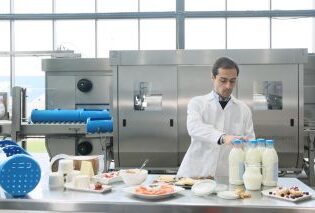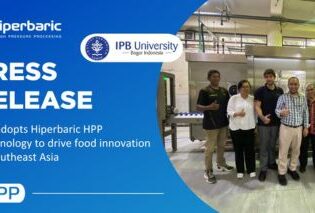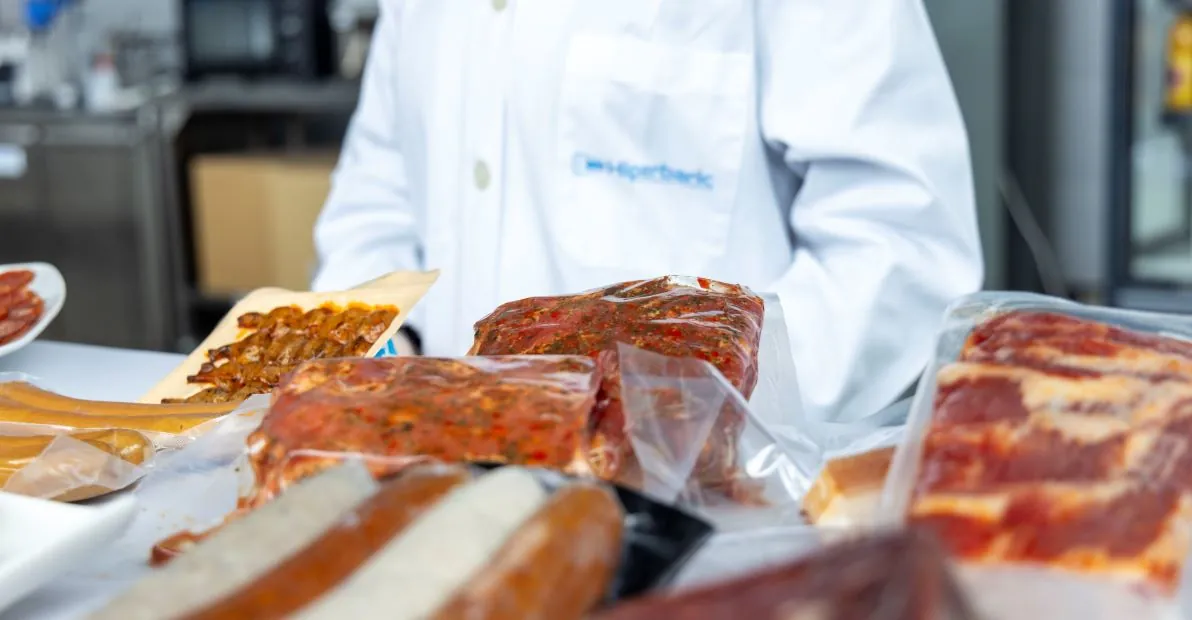
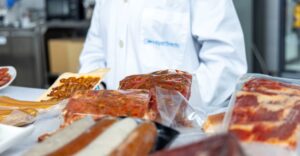
As a nonthermal technology, High Pressure Processing (HPP) offers a promising solution for enhancing safety and quality in raw meat products, addressing challenges related to shelf-life, food safety, and product consistency. By exploring the diverse applications of HPP in marinating, food service, and specialized processes like tenderizing and color correction, the raw meat sector can leverage this innovative technology to elevate industry standards and meet consumer demands for safe, flavorful, and visually appealing products.
Meat holds a special place in the culinary landscape. Whether minced, filleted, whole muscles, or marinated delicacies, offering a versatile canvas for creating a myriad of dishes that cater to diverse tastes and preferences. Raw meat products play a pivotal role in various cuisines worldwide.
Despite the culinary appeal of raw meat, the sector faces significant challenges that impact product quality and safety. One of the primary limitations is the exceptionally short shelf-life of raw meat products, which necessitates careful handling and storage to prevent spoilage and bacterial contamination. Ready-to-eat (RTE) raw products such as carpaccio, ceviche, tatakis, and steak tartare also pose food safety concerns due to their uncooked nature, emphasizing the need for stringent quality control measures. Additionally, new culinary trends such as meat aging or undercooked burgers may expose consumers to new hazards that intensive cooking used to mitigate.
High Pressure Processing (HPP) as a Solution
High-Pressure Processing (HPP) is a nonthermal food processing technology that uses extremely high pressure, typically up to 600 MPa (87,000 psi), to inactivate pathogens and spoilage microorganisms in food products. While HPP is effective in enhancing the safety and shelf life of raw meat products, its application can face certain limitations. One notable issue is the color change due to the structural modification of myoglobin, the protein responsible for the red color of raw meat. This change occurs in the 200 – 400 MPa (30,000 – 58,000 psi) pressure range. The modification in the 3D structure of myoglobin, along with other protein changes, alter the way in which the surface reflects light, thus reducing redness and increasing lightness, which gives the meat a “cooked” appearance (Bak et al., 2019). This effect is more pronounced in red meat like beef, which has a higher content of myoglobin, as shown in Figure 1.
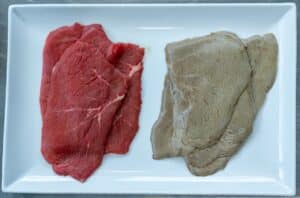
To minimize these changes, the pressure and pressure holding time parameters can be optimized so that the change is less noticeable. The goal is to find a balance between processing conditions and acceptable color changes, thereby increasing the shelf-life of the meat compared to the unprocessed counterpart. By carefully adjusting these parameters, it is possible to obtain all-natural or additive-free products that are safer and have a longer shelf-life. The synergy of HPP with preservative solutions has also been demonstrated in extending shelf life beef up to 6 weeks, as well as helping to reduce color change at relatively low pressures (300 MPa / 43500 psi for 5 min; Giménez et al., 2015).
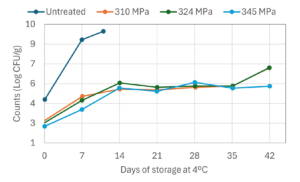
Regarding food safety, a pressure of 450 MPa (65,200 psi) for 5 min inactivated Escherichia coli and Listeria monocytogenes in chicken breast fillets to undetectable levels (<2.0 log CFU/g), and reduced Salmonella spp. by >3 log, extending shelf-life by 3–14 days. When the pressure was increased to 600 MPa (87,000 psi), all micro-organisms were inactivated below detectable levels (6–8 log reduction), improving shelf-life by 7–14 days (Figure 3; Kruk et al., 2011).
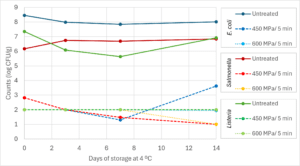
The most stringent HPP conditions (up to 600 MPa / 87,000 psi) can be applied to certain products intended to be served cooked, even if the color of raw meat is altered. After cooking, the appearance of the high-pressure processed meat will be identical to that of unprocessed cooked meat. This opens up the possibility of using HPP technology in food service, as the end consumer will enjoy the cooked product. Marinating raw meat with seasonings or dressings to mask the irreversible color change, while simultaneously enhancing food safety by controlling microbial proliferation, is another option used by some manufacturers.
Potential HPP Applications in Raw Meat: Tenderization and Color Correction
HPP can serve as a valuable tool for tenderization tough cuts, resulting in improved overall product quality and consumer satisfaction. At relatively low pressure levels (< 300 MPa / 46,500 psi), HPP can be applied to improve the muscle quality and enhance deboning of pre-rigor meat. In the early stages after slaughter, HPP accelerates the glycolysis rate accompanied by a fast pH drop, preventing toughening and without any deterioration of the color (Smit et al., 2010, Macfarlane 1973). In this case, the improved tenderness is associated with a lower myofibrillar fragmentation index and reduced calpain 1 enzymatic activity (Morton et al., 2017 & 2018). By carefully integrating HPP into raw meat processing workflows, manufacturers can achieve precise outcomes that meet or exceed industry standards.
The modification of protein structure induced by HPP and the effect that this has on meat color can be exploited to improve the appearance of defective meat: Dark Firm Dry (DFD) or Dark Cutter Beef (DCB). In a study conducted on defective USDA choices and strip loins, processing between 300 and 400 MPa (43,500 and 58.000 psi) improved the red color of DCB without affecting its quality (Figure 4, Reesman et al. 2023a). HPP treatments also did not affect initial and sustained juiciness, beef flavor intensity, or overall acceptability according with a trained sensory panel (Reesman et al., 2023b).
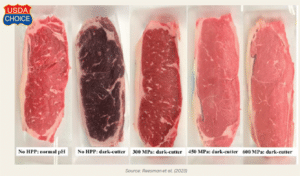
In conclusion, as HPP continues to evolve and gain recognition in the raw meat industry, it represents a transformative step towards ensuring excellence, innovation, and sustainability in the culinary realm.
Do not hesitate to contact us in case you want to explore the technology.

